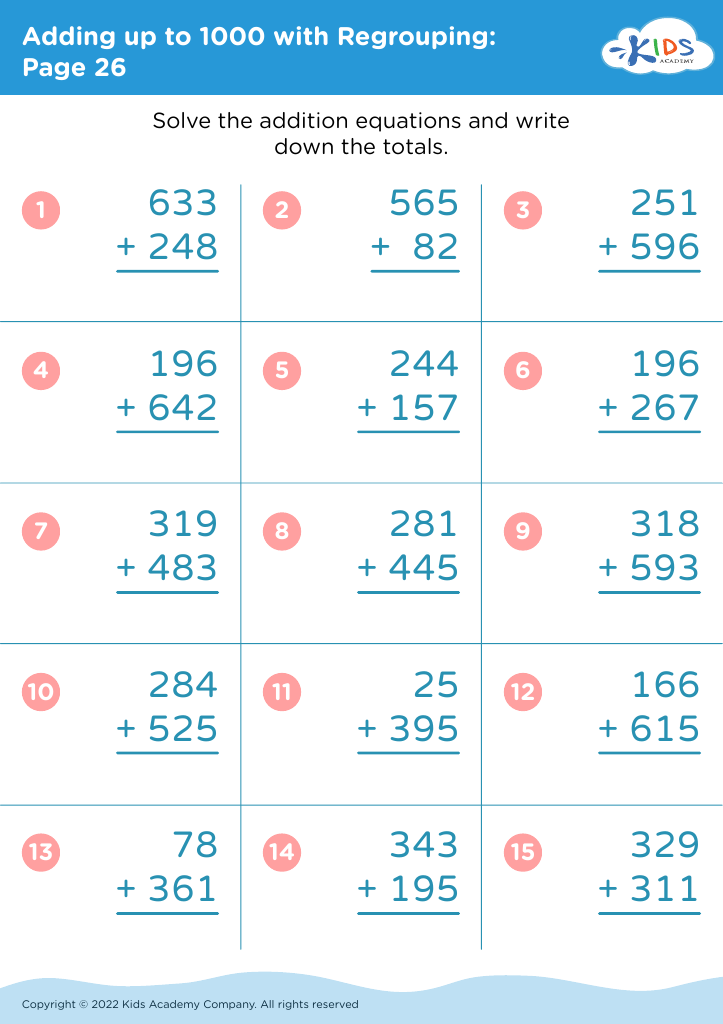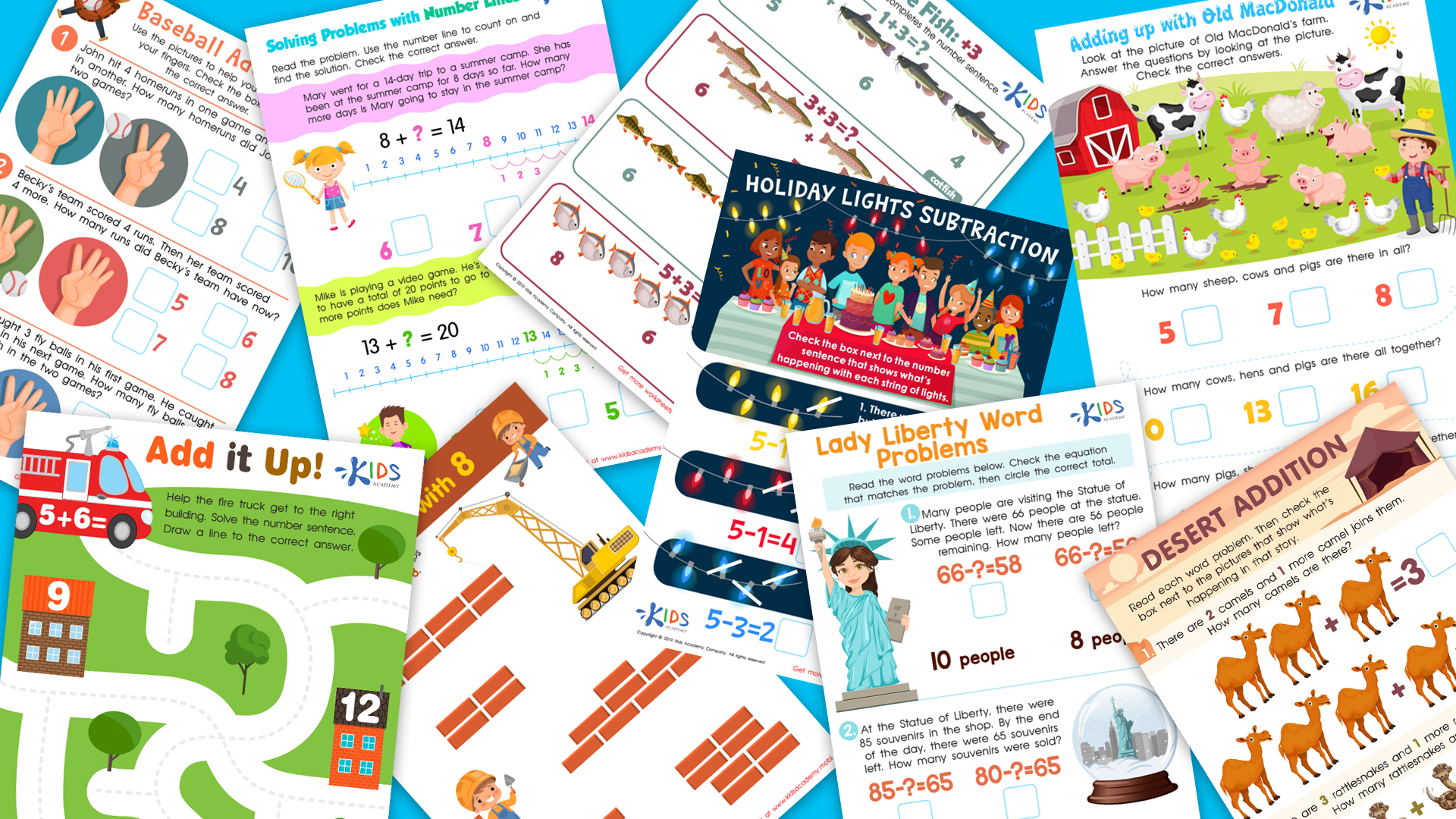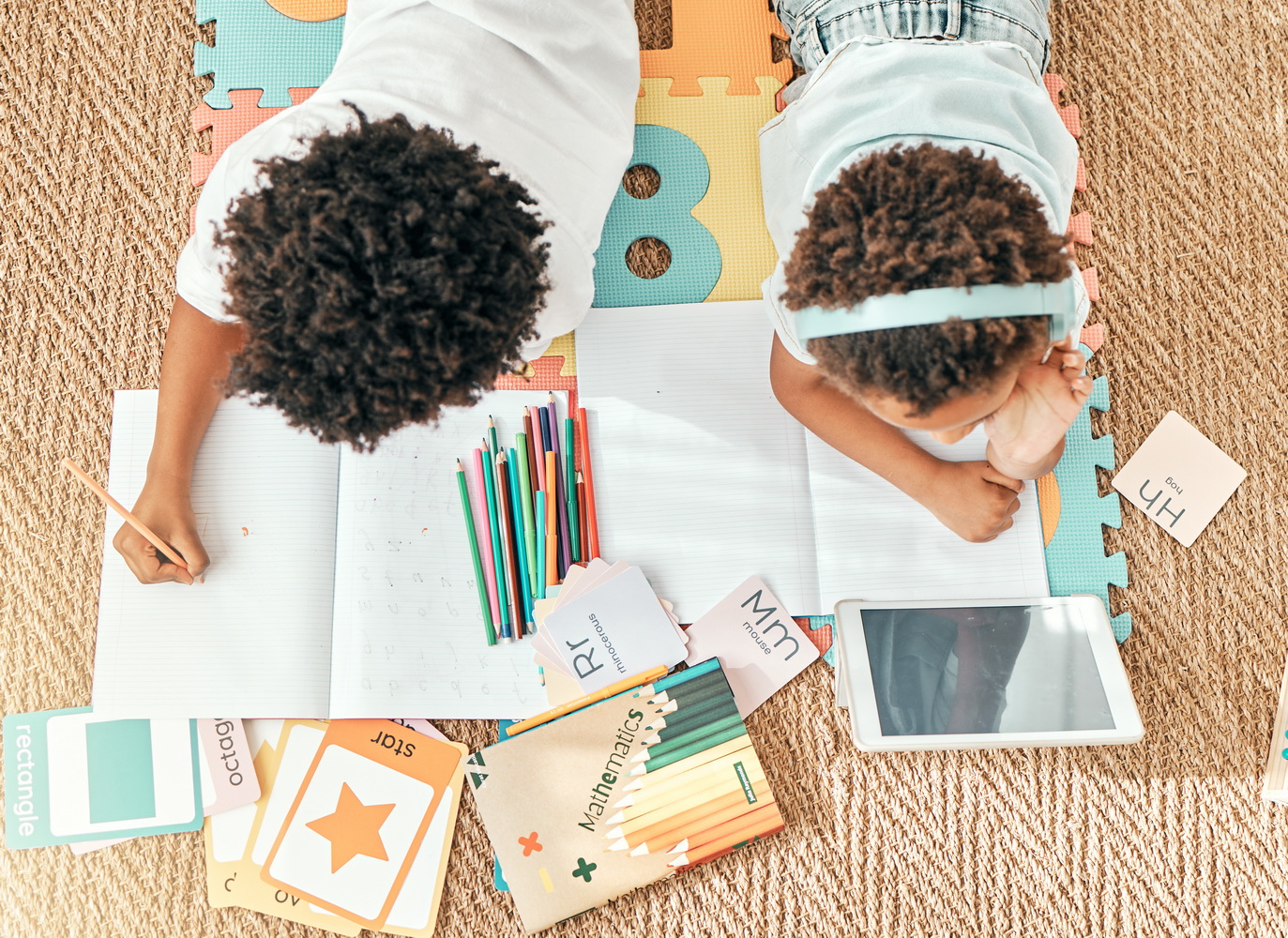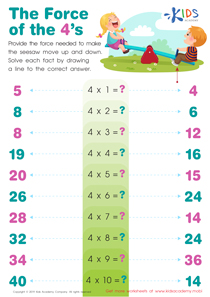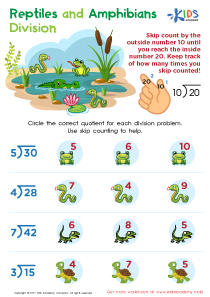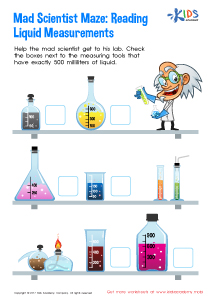Visual Learning Grade 3 Addition & Subtraction Worksheets
6 filtered results
-
From - To
Enhance your third grader’s math skills with our Visual Learning Grade 3 Addition & Subtraction Worksheets! These engaging, printable resources are specifically designed to help young learners understand key mathematical concepts through visual aids. By incorporating vivid images, diagrams, and real-world scenarios, students can grasp addition and subtraction more intuitively. Our worksheets promote active learning, encouraging kids to solve problems using visual strategies. Perfect for classroom use or homeschooling, these resources support differentiated learning, catering to various learning styles. Boost your child's confidence in math while making learning fun! Explore our collection today and watch their skills soar!
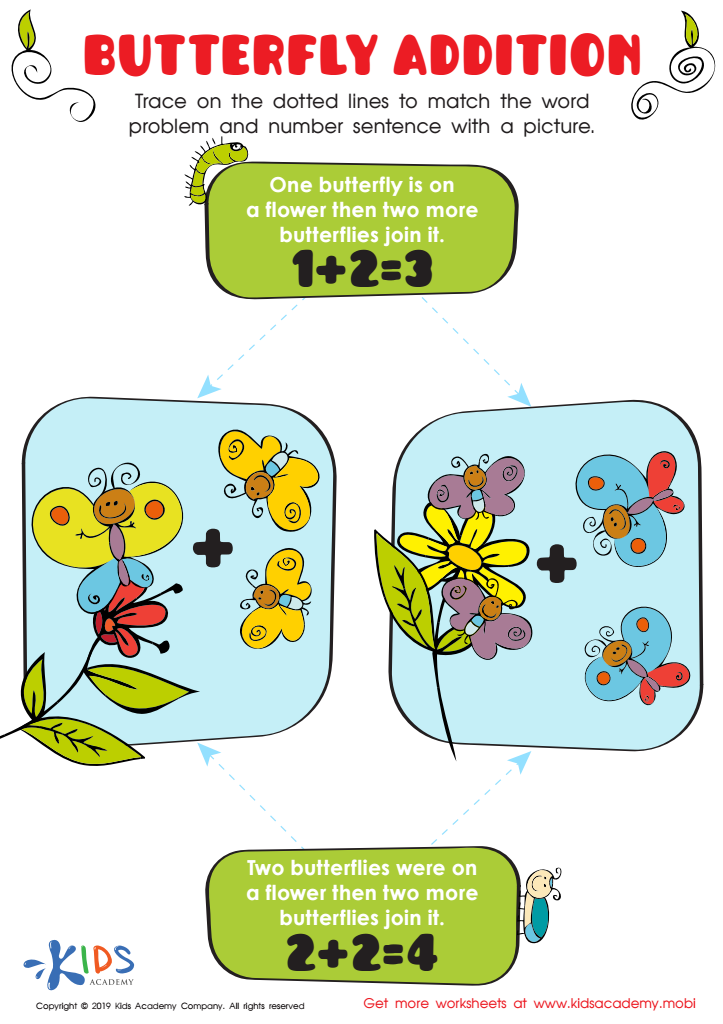

Butterfly Addition Worksheet


Subtracting Socks Worksheet
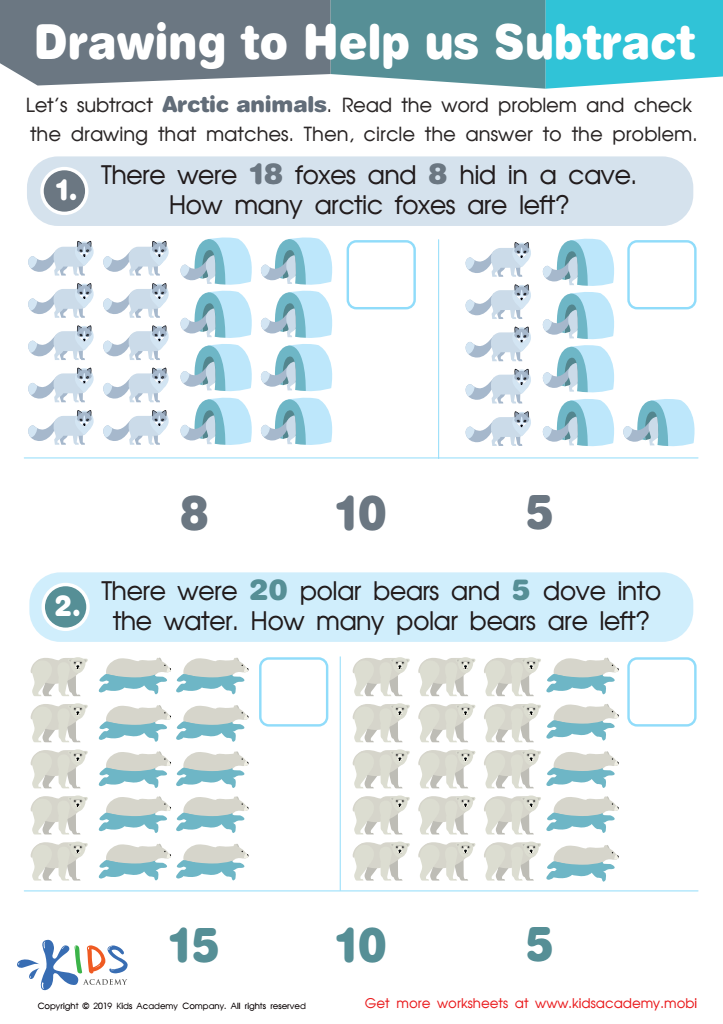

Drawing to Help Us Subtract Worksheet
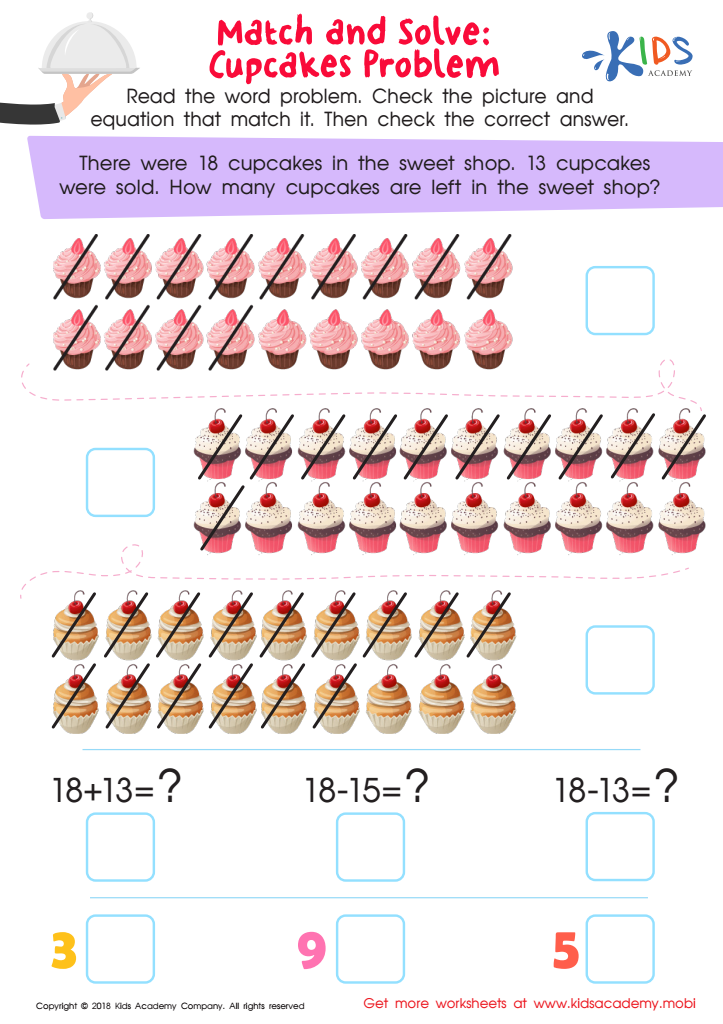

Match and Solve: Cupcakes Problem Worksheet


Addition at the Zoo Worksheet
Visual learning is an essential approach for teaching Grade 3 addition and subtraction, as it engages young learners by connecting mathematical concepts to real-world representations. Parents and teachers should prioritize this method because visual aids—such as number lines, counters, charts, and diagrams—help to simplify complex ideas, making them more accessible and understandable.
Visual learning allows children to grasp the relationships between numbers, enhancing their problem-solving skills. For instance, using manipulatives can help students visually represent addition by grouping objects. This creates a clearer understanding of how numbers combine, fostering a solid foundation for future math skills.
Furthermore, incorporating visual resources caters to diverse learning styles. Some children may thrive through auditory methods or reading, but others benefit significantly from hands-on experiences. Therefore, employing visual techniques increases student engagement and retention of information.
Visual learning also supports collaborative discussions among peers, promoting social interaction and deeper conceptual understanding. By effectively using this approach in teaching addition and subtraction, parents and teachers encourage a positive attitude toward math, build confidence, and prepare students for more advanced math challenges. As foundational skills, competency in these areas ensures long-term success in mathematics.
 Assign to My Students
Assign to My Students
